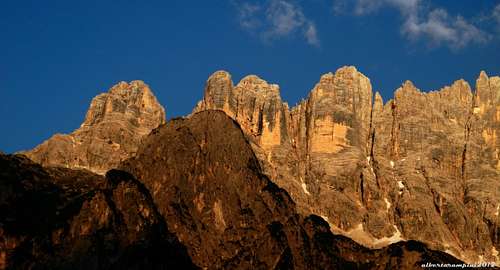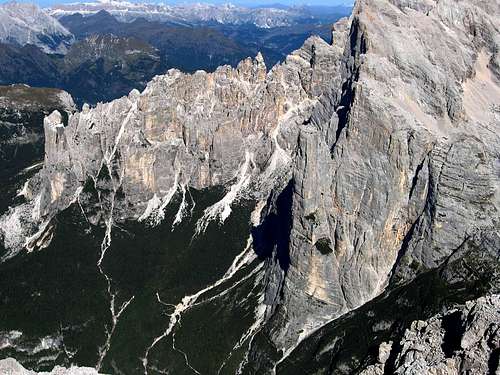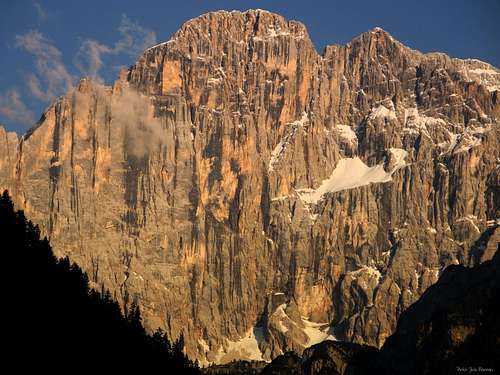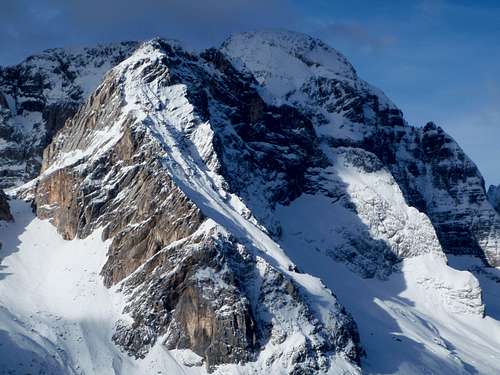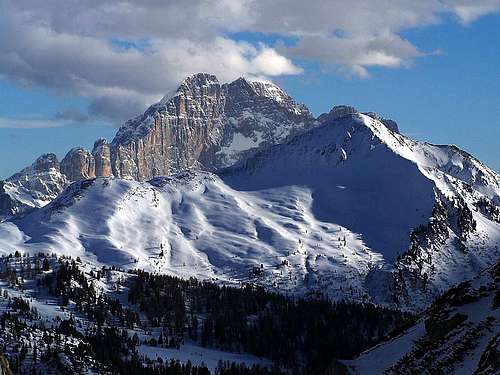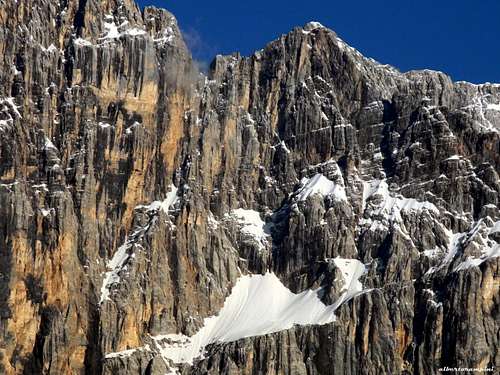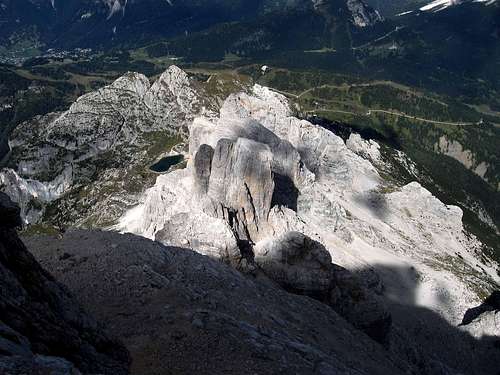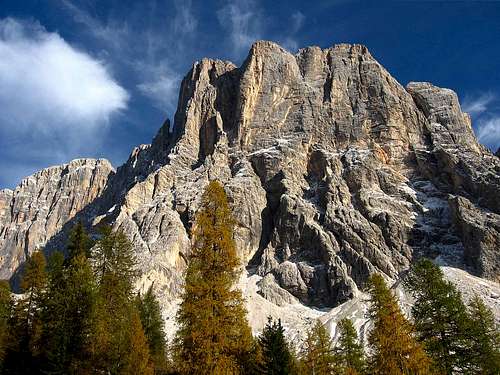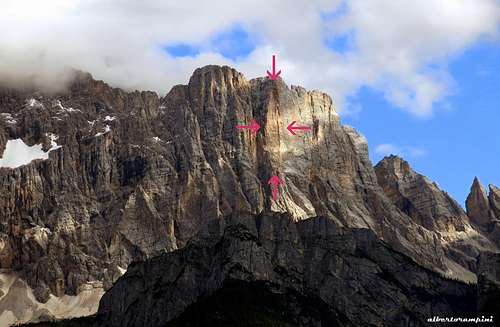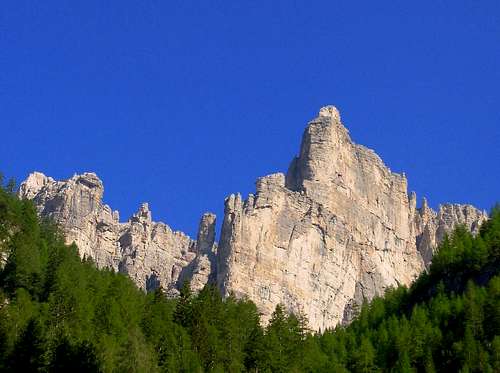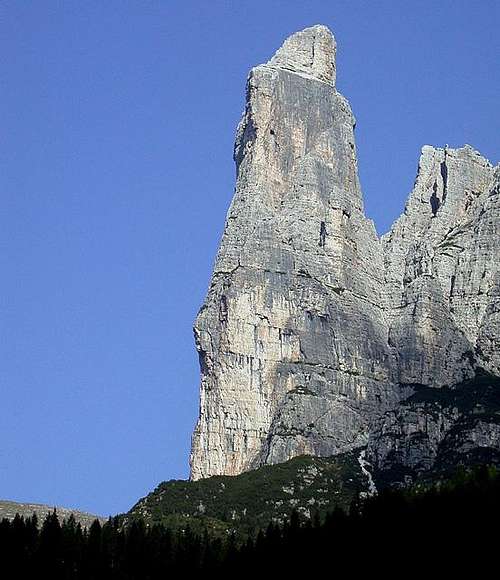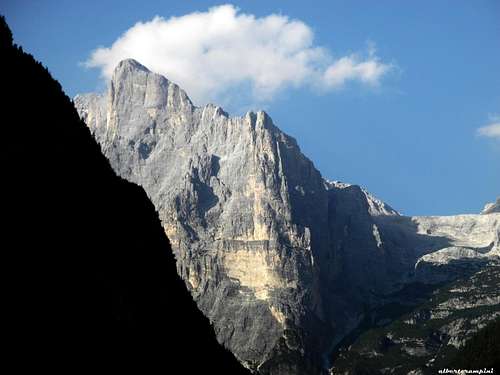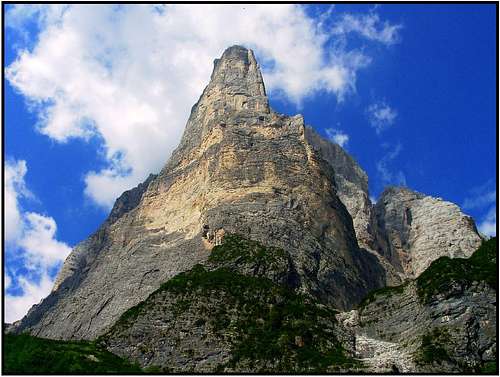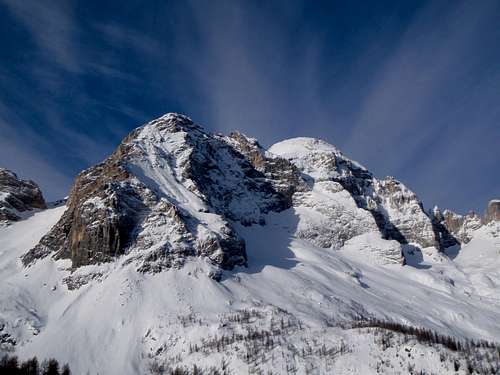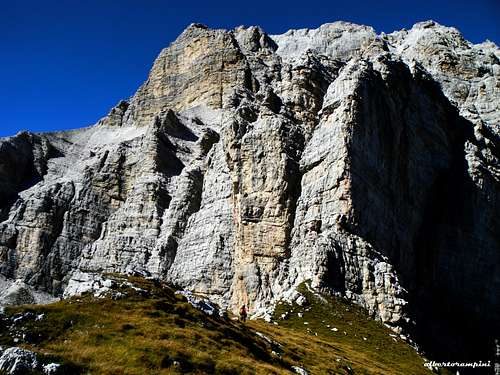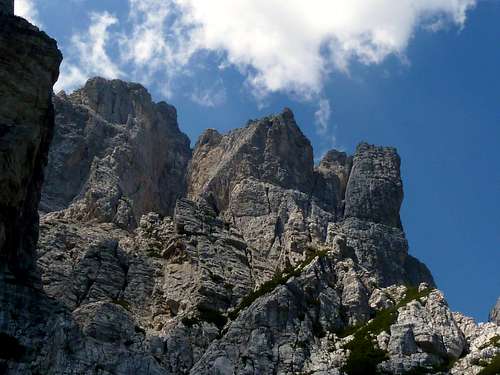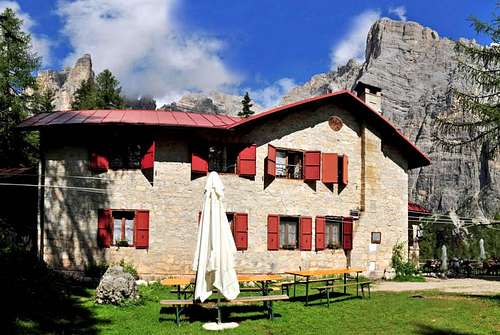-
 51537 Hits
51537 Hits
-
 97.16% Score
97.16% Score
-
 66 Votes
66 Votes
|
|
Area/Range |
|---|---|
|
|
46.37853°N / 12.04633°E |
|
|
Hiking, Mountaineering, Trad Climbing, Sport Climbing, Aid Climbing, Big Wall, Via Ferrata |
|
|
Spring, Summer, Fall |
|
|
10565 ft / 3220 m |
|
|
Overview
Civetta Group
The Civetta group is located in the Eastern Dolomites and it is one of the most impressive, secluded and alpinistic group of the whole Dolomites. It runs from North to South, clearly delimited from the neighbouring groups by two deep valleys, the Valle Cordevole to the West and the upper Valle di Zoldo to the East. Its Northern boundary is Forcella Staulanza, dividing the Civetta group from the Pelmo group, while the Southern one is Forcella delle Sasse, dividing it from the Moiazza group. The heart of the massif is the Central Hub, appearing as a huge rocky castle, with the world famous wall facing NW, named "la parete delle pareti", meaning "the wall of the walls".
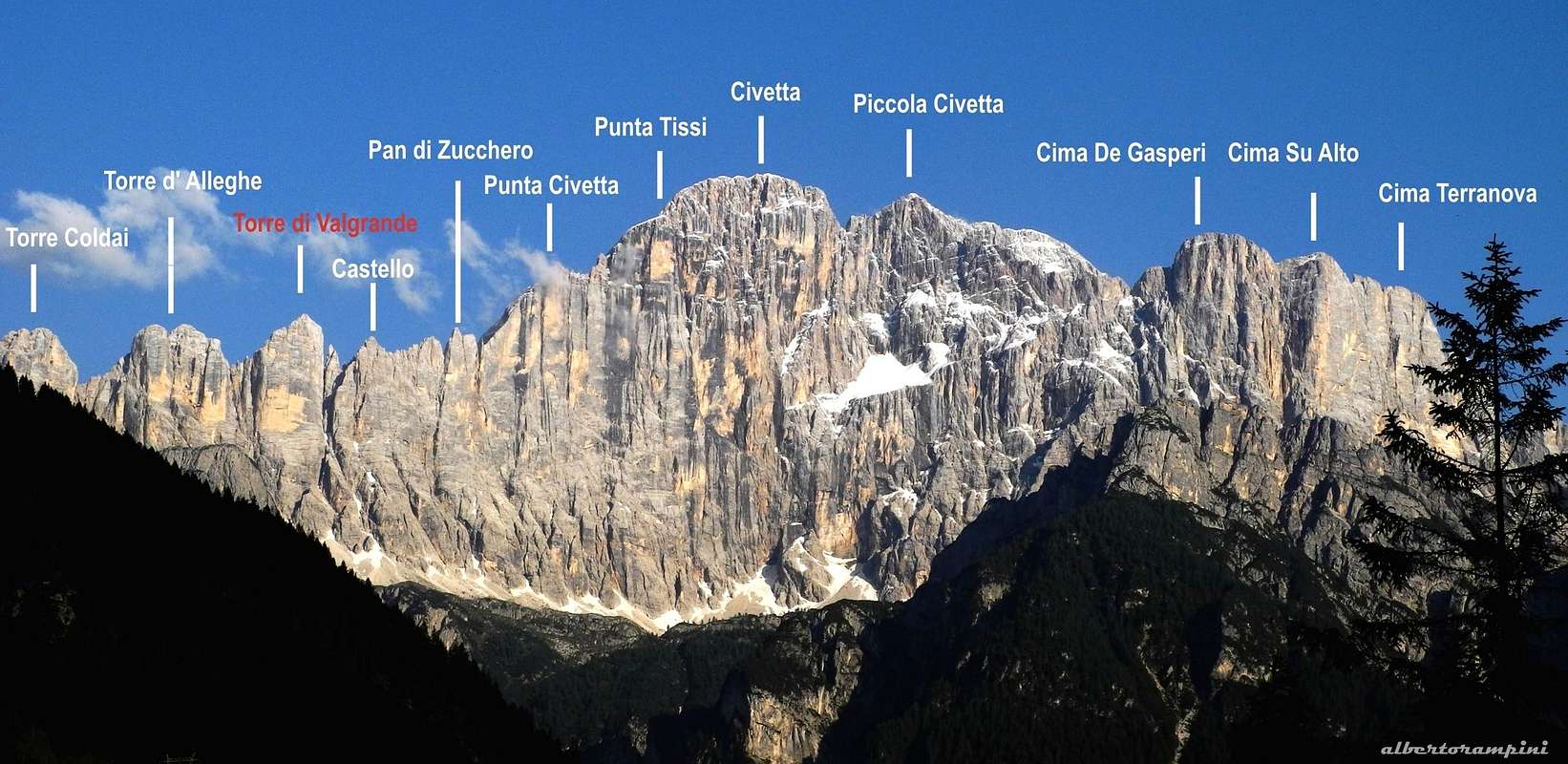
Almost all the summits are accessible only by difficult climbs, except a few, as Civetta main summit, which has an easy Normal route on its Eastern face and two "Vie Ferrate", and Cima della Busazza. Hikers can find here numberless possibilities to explore all the group by long and interesting walks and crossing, inside a wild and spectacular environment, aided by a fair number of shelters.
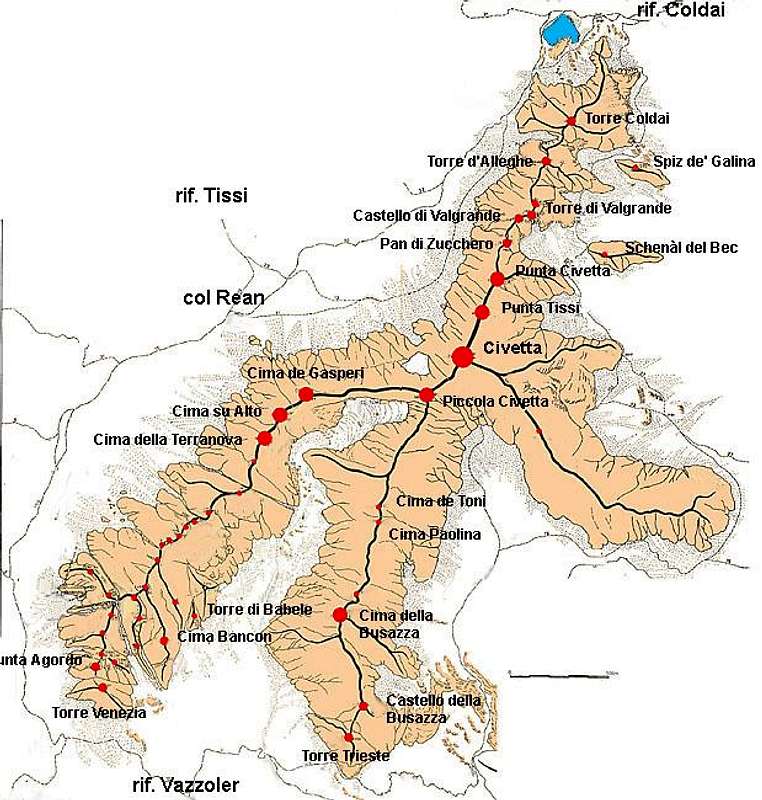
The Civetta group is the kingdom of the high-level climb with many challenging routes for very skilled climbers, but here there are also many amazing paths for hikers and some "Vie Ferrate" and moderate climbs. Coming here after a climb campaign made (for example) in Brenta Dolomites or Catinaccio or ... can make you feel like a child in front of a giant! Famous climbers from Germany, Austria and (of course) Italy came here to open the most difficult rock routes of the Dolomites, so that this group is also known the Kingdom of extreme climbing. Here you can spend a lot of weeks before you can say you've climbed the best routes ...
Getting There
Road access
- From Belluno to Pala Favèra – Take the road S51 towards Pieve di Cadore and Longarone; here leave the main road and follow on the left the road S251 towards Forno di Zoldo, Zoldo Alto and Pala Favèra (48 km. from Belluno).
- From Belluno to Alleghe – Take the road S203 towards Agordo, cross the town of Agordo m. 611, then follow the Val Cordevole road reaching Listolade and Alleghe (59 km. from Belluno).
To access the two main valleys you can also use bus services starting from Belluno:
- Valle Agordina: Agordo - Listolade - Masarè - Alleghe (wonderful lake)
- Val di Zoldo: Longarone - Forno di Zoldo - Zoldo Alto

Central hub
|
The most famous routes on the highest wall of the group, the NW face of Civetta, named "the wall of walls" are here: if you speak about the "Solleder", the "Comici" or the "Philipp-Flamm", all climbers immediately think of wonderful, difficult and striking routes. Some modern climbers have made them in few hours, but if you think that they've been traced in the Twenties and Thirties... Here there are also some very hard routes realized in the Sixties, Seventies and Eighties. One of the last routes is "Nuvole Barocche" (1999), climbed by Venturino De Bona e Piero Bez, a great challenging route just in the heart of the mighty face, a "must" for very strong and experienced climbers. And also "Dirty Harry" (VII, 1375m, 24-25/08/2016) climbed by Tom Ballard and Marcin Tomaszewski.
Northern branch
Main summits of this chain :
|
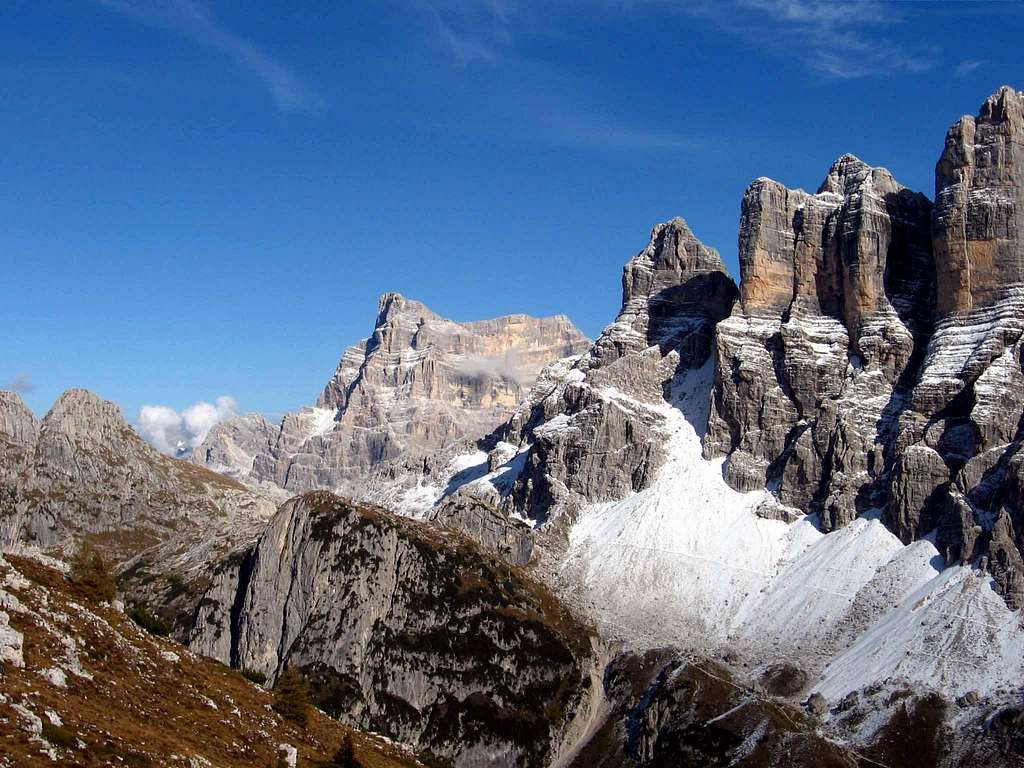
Wonderful chain with yellow walls, on each summit many difficult routes, some of them, as Torre Coldai and Torre d'Alleghe, has also medium (AD/D) difficulty routes. The most impressive faces are the NW ones, overlooking Val Civetta.
South-West great ridge
Main summits :
|
It's a great single wall divided in four summits by high rocky notchs, so that the first three ones, De Gasperi, Su Alto and Terranova are called "the magnificent triad".
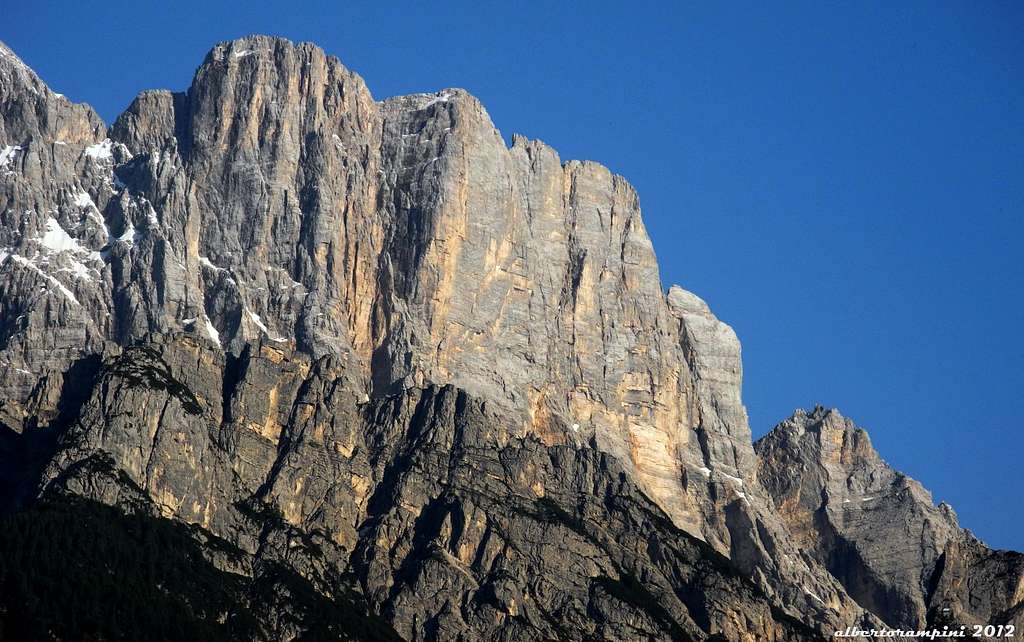
Here some "little" routes that requires up to 1100 m. drop climbs, none easy nor medium difficulty. Each summit is worth of a dedicated page.
On 2013, November 16th, a huge portion of the Northwest corner of Cima Su Alto collapsed. That Saturday, around 15:20, there was a collapse of big proportion precisely on the base and the NW corner of Su Alto. The rockfall has taken away a piece of wall that enclosed itself some important chapters of climbing in the Dolomites, such as the routes Piussi and Livanos, erasing a piece of mountaineering history. The Piussi practically no longer exists, the lower part of the Livanos was deleted. On 2014, September 30th, another smaller rockfall occurred in the same place More info here: Planetmountain
South-West branch - "Cantoni di Pelsa"
Main summits :
|
This is the last section of the mighty SW branch of Civetta, starting from Forcella dei Triestini and ending with the beautiful Torre Venezia, lying just close to Rif. Vazzoler, maybe the most climbed summit of the group. The most famous routes of Torre Venezia are the Tissi and the Andrich routes.
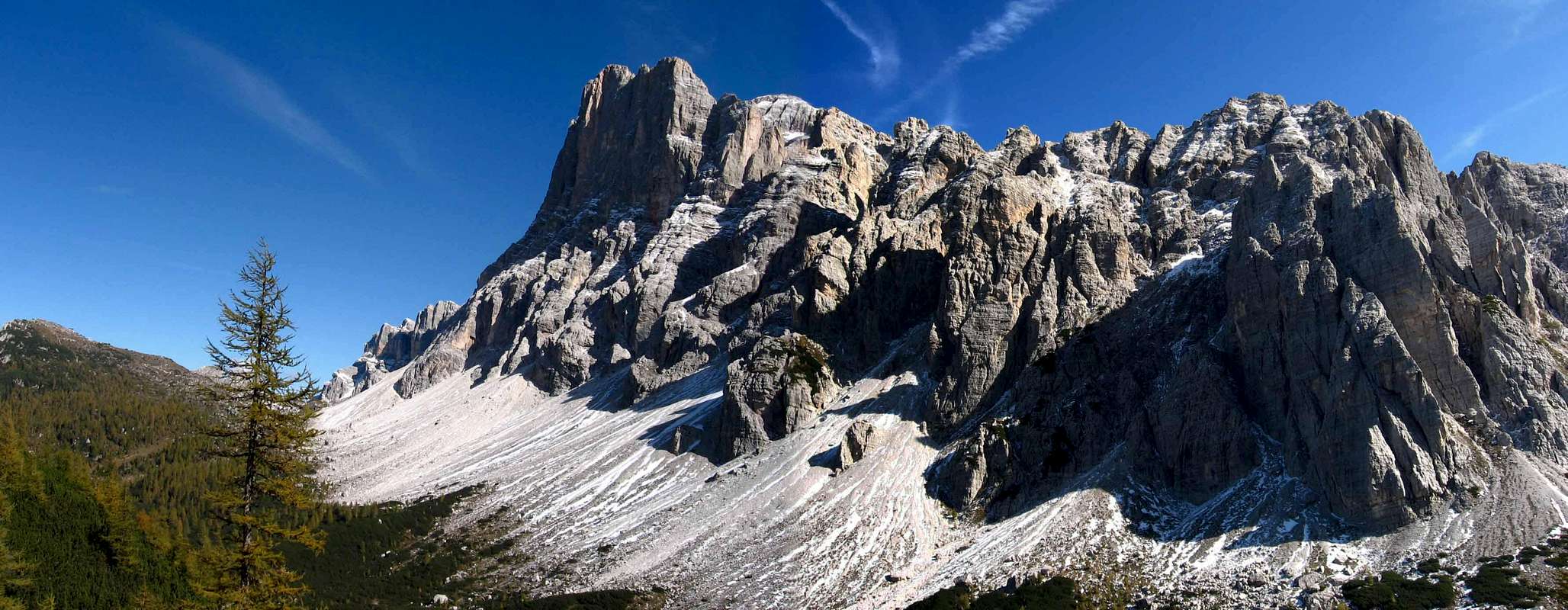
This is the most "human" zone of the group, plenty of challenging routes, but also of different possibilities to climb for medium climbers. It is a very "Babele" group, a lot of pinnacles, towers, channels where you can also think to climb a summit and arrive on another one. The starting hut for climbing and hiking in Cantoni di Pelsa is Rifugio Vazzoler.
South branch - "Cantoni della Busazza"
Main summits :
|
Cantoni della Busazza are the branch which starts from Piccola Civetta, heading straightly toward South and running for about 2,5 km., delimited by Van delle Sasse to East and Val dei Cantoni to West. Here are is situated two famous summits often climbed, Cima della Busazza and Torre Trieste, "the Tower of the towers", one of the most difficult summit of the Dolomites, with its South wall 700 m drop where run the outstanding Carlesso and Cassin routes. The "Normal route" (used only for coming down) is far more difficult than the Normal one on Campanile Basso di Brenta.
Red Tape
No fees no permits required. The whole group is a mountain system included among the nine ones acknowledged as an UNESCO World Heritage Site in 2009. More info about Dolomiti Unesco World Heritage here:
- in the article by Silvia Mazzani: Dolomites living mountains
- on the Unesco Official web-site: Unesco
- on the Fondazione Dolomiti Unesco web-site: Fondazione Dolomiti Unesco
Climbing images
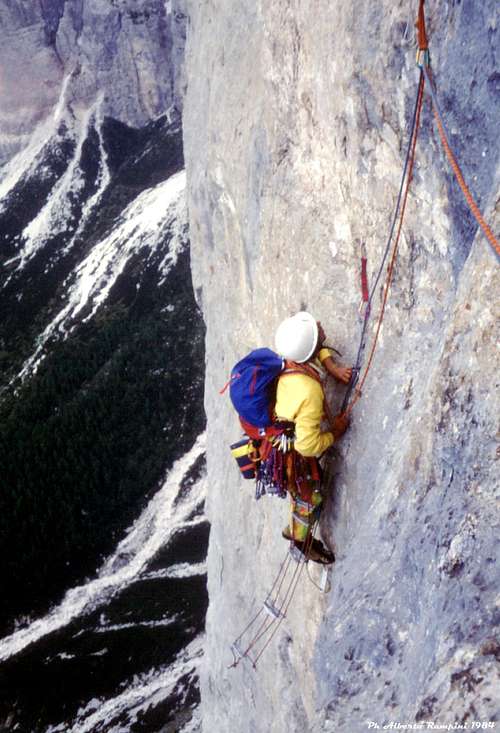
|

|

|
Other images
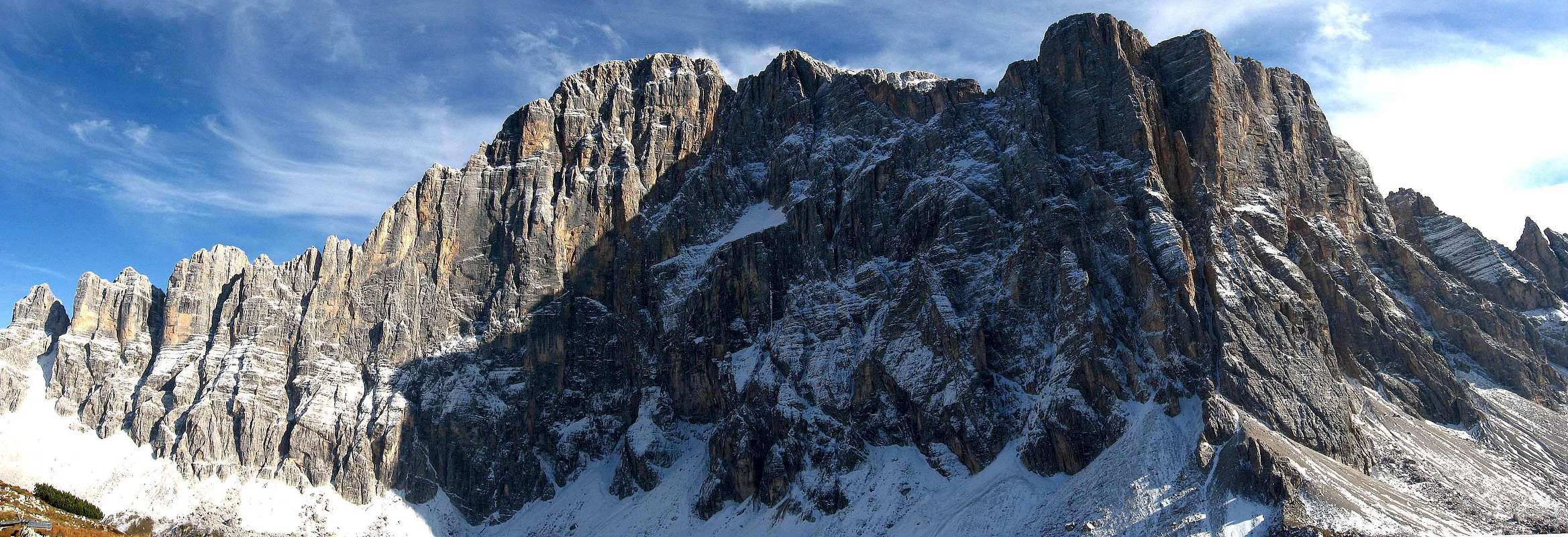
Moiazza group
Main summits :
|
Moiazza, often considered as a part of the Civetta Massif because of its close proximity to this group, is a mountain range now treated as a separate range and properly considered apart from the neighbouring Civetta. It has a big wall facing the Val Corpassa (the valley that you must run to reach rif. Vazzoler from Listolade). See here on Summipost the dedicated page: Moiazza Group.
Huts
Huts and Bivouacs
Rifugio Vazzoler m. 1714 - The hut is situated at the Southern end of the Civetta Group, just at the footh of the beautiful Torre Trieste and Torre Venezia - C.A.I. Conegliano, 52 beds, open from middle June to middle September
- From Capanna Trieste (getting there from Listolade, on the road following Val Corpassa, cars allowed) - 1,45 hour by walk
- From Listolade 680 m - 3 hours walk
Rifugio Coldai m. 2132 - The hut is situated at the Northern end of the Civetta Group on Val di Zoldo side - C.A.I. Venezia, 83 beds, open from June 20th to September 20th
- From Pala Favèra (m. 1505) – Follow the gravel road starting near the camping and rising with some hairpins to Malga Pioda m. 1816, then a good path leading to the hut (2 hours from Pala Favèra) – It’s the shortest way
- From Alleghe – Follow the road to Piani di Pezzè (m. 1470), then the narrow gravel road rising to Forcella d’Alleghe and to Malga Pioda m. 1816. From Malga Pioda follow the same path as the previous approach.
-Rifugio Tissi m. 2262 - The hut is situated on Col Rèan; the view over the majestic NW face of Civetta is unforgettable - C.A.I. Belluno, 65 beds, open from June 20th to September 20th
- Long, strenuous and rarely frequented are the paths from Masarè (971 m) and from Alleghe; the best way to reach Rif. Tissi is coming from Rif.Vazzoler (2 hours) or from Rif. Coldai (less than 2 hours).
- Rif. Torrani m. 2984 - Lying on Civetta Normal route, the route usually followed to descent, about 230 meters below the main summit - C.A.I. Conegliano, 24 beds, open from July 1th to September 15th
- From Rif. Coldai - Follow the Sentiero Tivàn and Civetta normal route (4,30 hours) - Alpine approach (I and II grade UIAA)
- From Rif. Vazzoler - Follow the path to Van delle Sasse and Via Ferrata Tissi (4,30 hours) - Alpine approach (I and fixed ropes)
- Rif. Tomè m. 2869 - The bivouac is situated in a secluded site closed by the famous triad Cima De Gasperi, Cima Su Alto and Cima della Terranova. It's an emergency shelter useful to the climbers of Civetta, De Gasperi, Su Alto and Terranova - C.A.I. Agordo, 6 places, always open
- From Rif. Vazzoler along Val dei Cantoni (5 hours) - Alpine approach (I and II grade UIAA)
Camping
Campings in Val di Zoldo, useless for climbing, very fine for tourists and hikers
When To Climb
Starting from June for Cantoni di Pelsa. From July to September for all the other subgroups
Meteo
Guidebooks
- Guidebooks
The late complete and updated guidebook is:
"Civetta" by Ivo Rabanser - Collana CAI-TCI Guide dei Monti d'Italia, 2012 june
Other historycal guidebooks:
"Civetta" by Oscar Kelemina - Scuola di Alpinismo C.Capuis, CAI Mestre, 1984
"Civetta-Moiazza" by Vincenzo Dal Bianco - Giovanni Angelini - Tamari Editori, Bologna 1984 - € 14,46
a report from Gangolf Haub (in German language) Dolomiten Civettagruppe - Andreas Kubin - Alpenvereinsführer - Bergverlag Rudolf Rother (1980) - ISBN: 3 7633 2308 2


